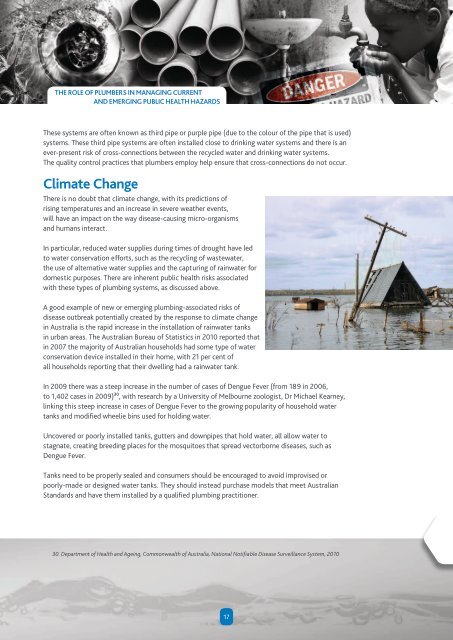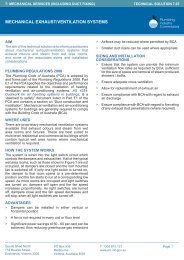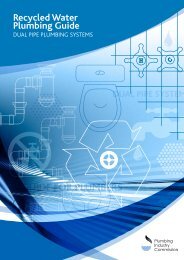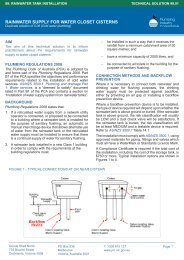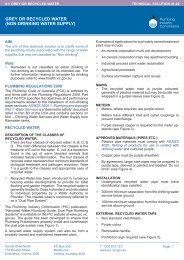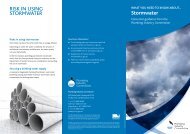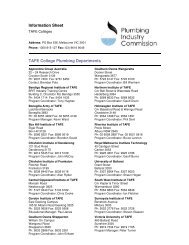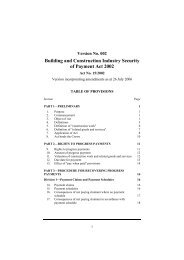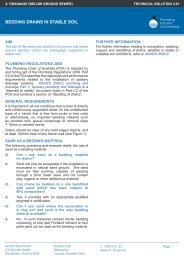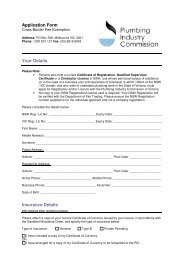current and emerging public health hazards - Plumbing Industry ...
current and emerging public health hazards - Plumbing Industry ...
current and emerging public health hazards - Plumbing Industry ...
Create successful ePaper yourself
Turn your PDF publications into a flip-book with our unique Google optimized e-Paper software.
THE ROLE OF PLUMBERS IN MANAGING CURRENTAND EMERGING PUBLIC HEALTH HAZARDSThese systems are often known as third pipe or purple pipe (due to the colour of the pipe that is used)systems. These third pipe systems are often installed close to drinking water systems <strong>and</strong> there is anever-present risk of cross-connections between the recycled water <strong>and</strong> drinking water systems.The quality control practices that plumbers employ help ensure that cross-connections do not occur.Climate ChangeThere is no doubt that climate change, with its predictions ofrising temperatures <strong>and</strong> an increase in severe weather events,will have an impact on the way disease-causing micro-organisms<strong>and</strong> humans interact.In particular, reduced water supplies during times of drought have ledto water conservation efforts, such as the recycling of wastewater,the use of alternative water supplies <strong>and</strong> the capturing of rainwater fordomestic purposes. There are inherent <strong>public</strong> <strong>health</strong> risks associatedwith these types of plumbing systems, as discussed above.A good example of new or <strong>emerging</strong> plumbing-associated risks ofdisease outbreak potentially created by the response to climate changein Australia is the rapid increase in the installation of rainwater tanksin urban areas. The Australian Bureau of Statistics in 2010 reported thatin 2007 the majority of Australian households had some type of waterconservation device installed in their home, with 21 per cent ofall households reporting that their dwelling had a rainwater tank.In 2009 there was a steep increase in the number of cases of Dengue Fever (from 189 in 2006,to 1,402 cases in 2009) 30 , with research by a University of Melbourne zoologist, Dr Michael Kearney,linking this steep increase in cases of Dengue Fever to the growing popularity of household watertanks <strong>and</strong> modified wheelie bins used for holding water.Uncovered or poorly installed tanks, gutters <strong>and</strong> downpipes that hold water, all allow water tostagnate, creating breeding places for the mosquitoes that spread vectorborne diseases, such asDengue Fever.Tanks need to be properly sealed <strong>and</strong> consumers should be encouraged to avoid improvised orpoorly-made or designed water tanks. They should instead purchase models that meet AustralianSt<strong>and</strong>ards <strong>and</strong> have them installed by a qualified plumbing practitioner.30. Department of Health <strong>and</strong> Ageing, Commonwealth of Australia, National Notifiable Disease Surveillance System, 201017


